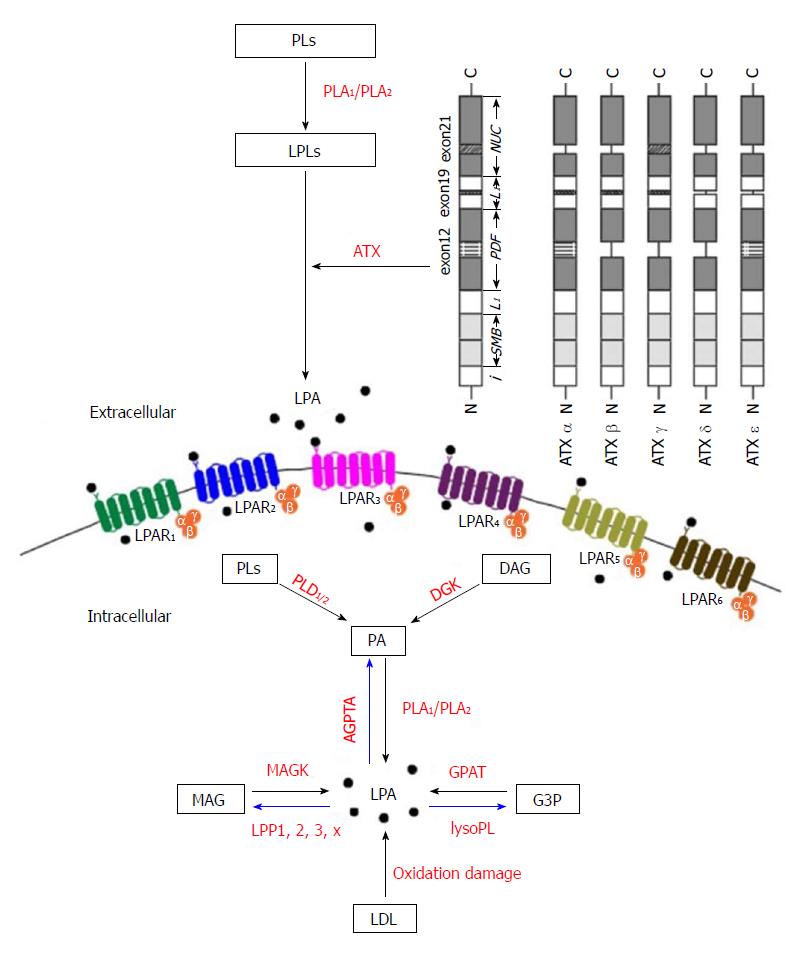Copyright
©The Author(s) 2018.
World J Gastroenterol. Sep 28, 2018; 24(36): 4132-4151
Published online Sep 28, 2018. doi: 10.3748/wjg.v24.i36.4132
Published online Sep 28, 2018. doi: 10.3748/wjg.v24.i36.4132
Figure 2 Biochemical pathways of lysophosphatidic acid synthesis and degradation.
LPA can be produced extracellularly and intracellularly as signaling mediators and membrane components, respectively. There are five major pathways for LPA production, (1) the lysophospholipids-ATX (LPLs-ATX) pathway, (2) the phosphatidic acid - phospholipase A1 or A2 (PA-PLA1/PLA2) pathway, (3) the de novo glycerophosphate acyltransferase (GPAT) synthesis pathway, (4) the monoacylglycerol kinase (MAGK) pathway, and (5) the oxidative modification of low-density lipoprotein (LDL) pathway. In the upper right corner of the figure, there are catalytically active isoforms (ATXα, ATXβ, ATXγ, ATXδ and ATXε), which are expressed in different tissues. PLs: Phospholipids; PLA1/PLA2: Phospholipase A1/2; LPLs: Lysophospholipids; ATX: Autotaxin; ATXα-δ: Protein structure scheme of the domains of ATX; LPA: Lysophosphatidic acid; DAG: Diacylglycerol; DGK: Diacylglycerol kinase; PLD1/2: Phospholipase D1/2; PA: Phosphatidic acid; AGPAT: Acylglycerophosphate acyltransferase; MAG: Monoacylglycerol; MAGK: Monoacylglycerol kinase; LPP: Lipid phosphate phosphatase; G3P: Glycerol-3-phosphate; lyso PL: Lysophospholipase; GPAT: Glycerophosphate acyltransferase; LDL: Low-density lipoprotein; i: Intramembrane domain; SMB: N-terminal somatomedin B-like domains; L1: L1 linker region; PDF: Phosphodiesterase domain; L2: L2 linker region; NUC: C-terminal nuclease-like domain; LPA1-6: Lysophosphatidic acid receptor 1-6.
- Citation: Yang F, Chen GX. Production of extracellular lysophosphatidic acid in the regulation of adipocyte functions and liver fibrosis. World J Gastroenterol 2018; 24(36): 4132-4151
- URL: https://www.wjgnet.com/1007-9327/full/v24/i36/4132.htm
- DOI: https://dx.doi.org/10.3748/wjg.v24.i36.4132









